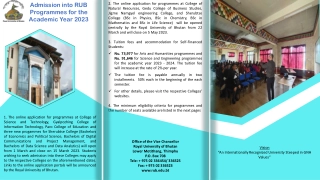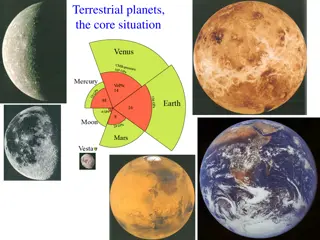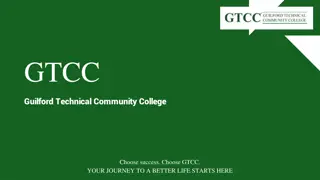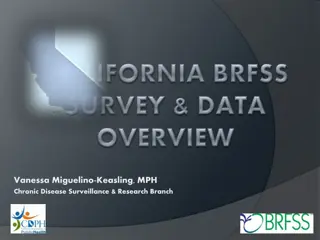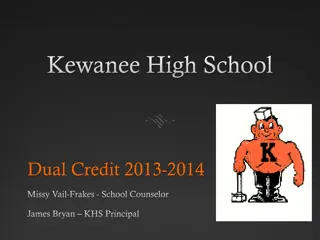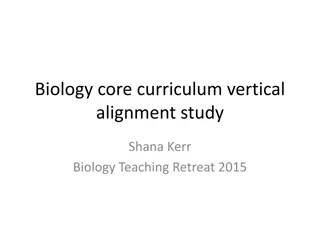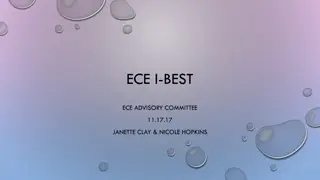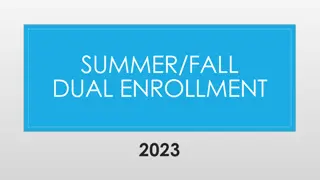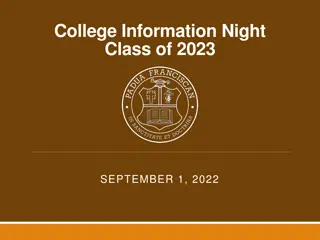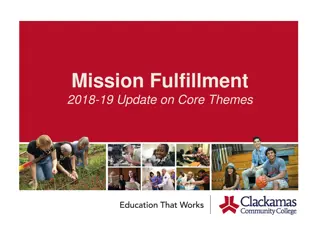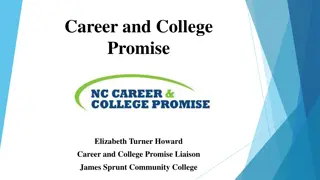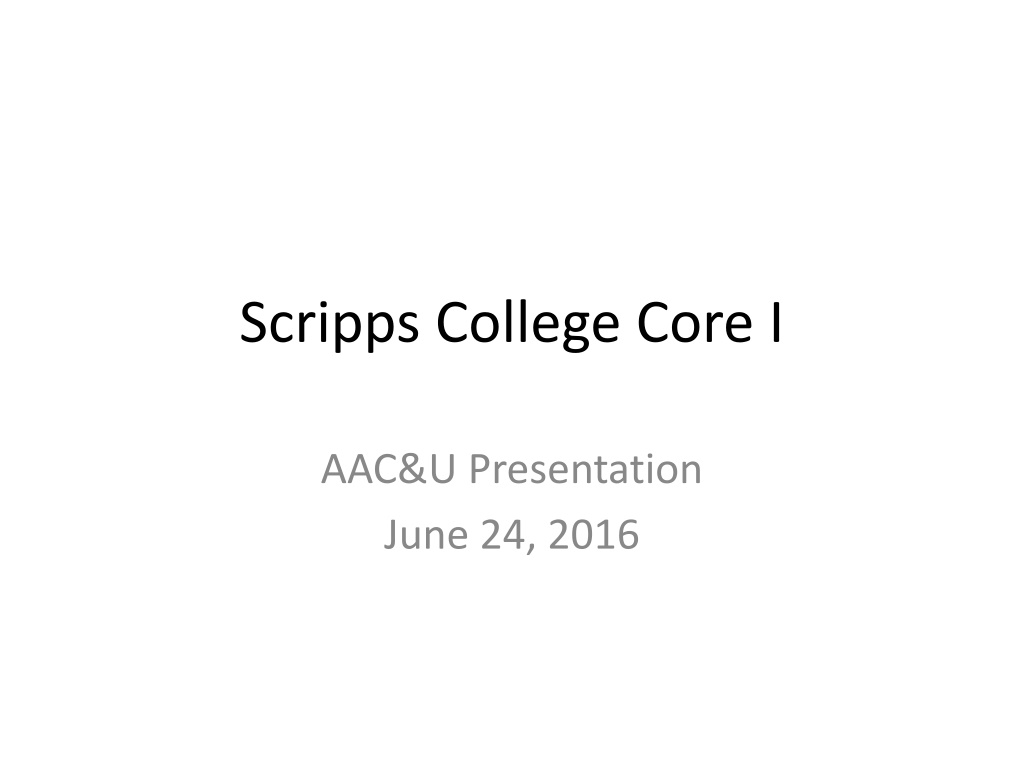
Exploring Communities: Core Curriculum at Scripps College
Dive into the interdisciplinary humanities core curriculum at Scripps College, where students and faculty investigate contemporary issues and debates through a historical lens. Discover how communities are formed, transformed, inclusive, exclusionary, and their impact on society. Engage with topics of historical memory, performance, and belonging while critiquing practices of exclusion across various dimensions. Uncover the complexities and ambiguities of community identities and representations.
Download Presentation

Please find below an Image/Link to download the presentation.
The content on the website is provided AS IS for your information and personal use only. It may not be sold, licensed, or shared on other websites without obtaining consent from the author. If you encounter any issues during the download, it is possible that the publisher has removed the file from their server.
You are allowed to download the files provided on this website for personal or commercial use, subject to the condition that they are used lawfully. All files are the property of their respective owners.
The content on the website is provided AS IS for your information and personal use only. It may not be sold, licensed, or shared on other websites without obtaining consent from the author.
E N D
Presentation Transcript
Scripps College Core I AAC&U Presentation June 24, 2016
Scripps Interdisciplinary Humanities Core Curriculum Core I (Fall Semester First Year) Histories of the Present: Community (2016 2018) Common academic experience for first-year students Alternating lecture/presentations and small discussion sections Team-taught by 16 18 professors from different disciplines representing the college's academic divisions (arts, letters, natural sciences, and social sciences) Core II (Spring Semester First Year) Interdisciplinary seminars taught by one or two professors 16 24 students per course (depending on number of professors) Focused, interdisciplinary investigation of various topics Core III (Fall Semester Second Year) Focused topics seminars, each taught by a single professor Small classes of 15 16 students Culminates in a self-designed final research and/or creative project
Core I "Histories of the Present: Community The first semester of Core is a broad-based foundational course in which students and faculty explore contemporary issues and debates through a historical lens. These investigations seek to explore the ways in which our self-understandings emerge from ways of thinking that are often taken as given as so natural and obvious that they prevent us from thinking critically about their complexities and ambiguities, and hinder us from seeing the world in other ways.
In Fall 2016, Core I takes up this task through an examination of communities. Starting with the question "What is a community?" we look at both large imagined communities such as modern nation-states and religious groups and smaller, more intimate groups that we regularly label as "community." We ask: How are communities formed and transformed? What role does historical memory and forgetting play in the creation of community? How are communities at once inclusive and exclusionary? What role do performance and memory play in the formation and transformation of communities? And when are communities beneficial and when are they potentially harmful?
In this course, we examine the ways in which communities are created and transformed through political acts, religious practices, military intervention, cultural performances, social networks, and bonding. In conjunction with this, we critique the ways in which practices of overt and implicit exclusion along the lines of birth, class, race, gender, sexuality, ability, and religious beliefs limit the possibility of belonging. We explore the ways in which individuals and communities define and represent themselves in accordance with and in resistance to the dominant powers that often determine a community's boundaries. We also explore how communities work in resistance to transform their own and others' political, economic, and social condition.
Core I Fall 2016 Histories of the Present: Community I. Formation, Negotiation, Transformation Nation Building, Simple/Complex Relationships, Communal Song, Citizenship, Women Writers Negotiating Communities, Class Identity, Autobiography as Community II. Exclusion and Resistance Indigenous Women and Struggle, Resisting Religion and Martyrdom, Punishment and Justice, Resisting Institutions of Exclusion, Censorship III. Imagining Communal Possibilities Ancient Greek Ritual Women s Community, Storytelling in African American Communities (early 20th century), Building Community Organizations, Public Art, Burning Man
I. Formation, Negotiation, Transformation State, Capital, and the Rise of Nationalism (Corey Tazzara) Benedict Anderson, selections from Imagined Communities Self-Assembly: Complexity from Simple Relationships (Babak Sanii) George Whitesides and Bartosz Grzybowski, Self-Assembly at All Scales ; Primo Levi, Carbon Imagining Community Through Song (YouYoung Kang) Sheryl Kaskowitz, My Home Sweet Home and My Home Sweet Home (Plate) from God Bless America; Recording of God Bless America Boundaries and Belonging: Citizens and Others in the Global Community (Sumita Pahwa) Ayelet Shachar and Ran Hirschl, Citizenship as Inherited Property ; Anne Hull, The Education of Maira Salim 3 Essays: Solnit, Woolf, Kincaid & Practices of Women Writing(Myriam Chancy) Virginia Woolf, Chapters 3 and 5 in A Room of One s Own; Jamaica Kincaid, Chapters 1 and 2 in A Small Place; Rebecca Solnit, Men Explain Things to Me The Class Closet: How Do We Get In and Why Don t We Come Out? (Nathalie Rachlin) Didier Eribon, selections from Returning to Reims Autobiographical Dance (Kevin Williamson) Ann Cooper Albright, Dancing Bodies and the Stories They Tell ; Videos of Blondell Cummings and David Dorf dances
II. Exclusion and Resistance Reproducing Indigenous Community in Times of Struggle: Indigenous Women, Secrets and Cultural Transformation in Rigoberta Mench s Testimony (Claudia Arteaga) Rigoberta Mench , Elisabeth Burgos-Debray, ed., selections from I, Rigoberta Mench Resisting Religion: Martyrdom, Memory, and Community (Andrew Jacobs) Bart D. Ehrman, ed., Martyrdom of Perpetua and Felicitas from After the New Testament; Elizabeth Castelli, Performing Persecution, Theorizing Martyrdom Punishment, Community, and Justice (Dion Scott-Kakures) Angela Davis, Chapters 1 and 6 from Are Prisons Obsolete?; Jeffrie G. Murphy, Marxism and Retribution ; Michelle Alexander, The Rebirth of Caste Resisting Institutions: Representation, Protest, and 'The System' (Kim Drake) Susan Nussbaum, selections from Good Kings, Bad Kings Disruptive Musics: Communities, Music, and Censorship (David Cubek) Martin Scherzinger, Double Voices of Musical Censorship after 9/11
III. Imagining Communal Possibilities The Goddess Demeter: Her Hymn, Her Rituals, Her Communities (Ellen Finkelpearl) "Homeric Hymn to Demeter," trans. Helene Foley; Helene Foley, "Background: The Eleusinian Mysteries and Women's Rites for Demeter" Storytelling and Community in Zora Neale Hurston s Their Eyes Were Watching God (Tom Koenigs) Zora Neale Hurston, Their Eyes Were Watching God; Richard Wright, Between Laughter and Tears Screening of In Jackson Heights, Dir. Frederick Wiseman (2015) Visual Art and Social Change (Kasper Kovitz) Suzanne Lacy, "Cultural Pilgrimages and Metaphoric Journeys" C'mon Baby Light My Fire: Structure and Chaos in the Wispy Community of Burning Man (Jen Groscup) Gary Alan Fine and Lisa-Jo van den Scott, Wispy Communities: Transient Gatherings and Imagined Micro-Communities ; Burning Man Survival Guide ; Video of Burning Man Festival

